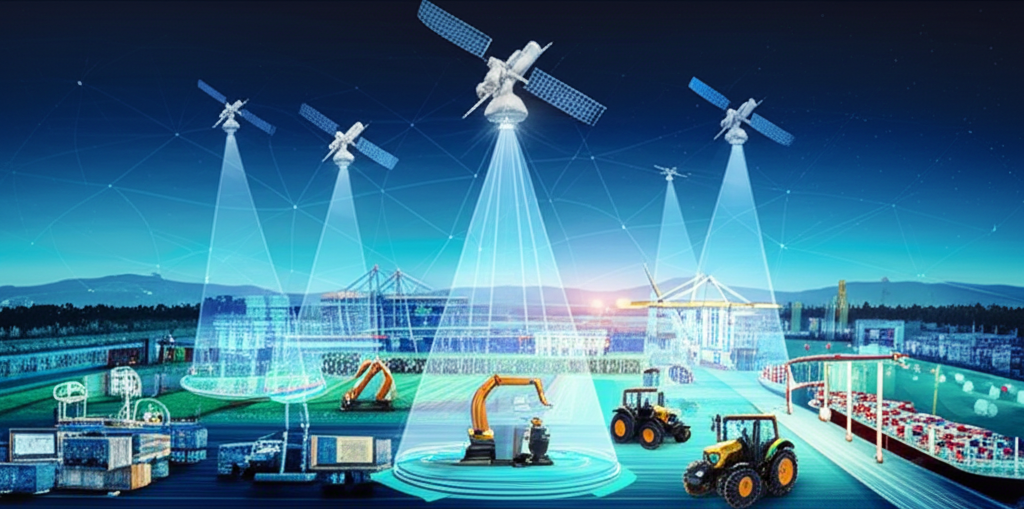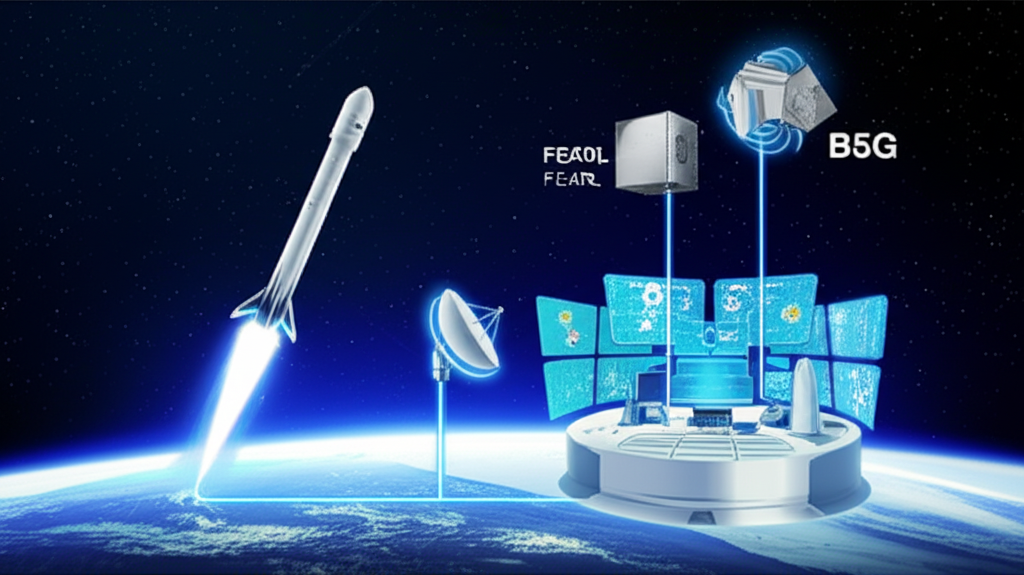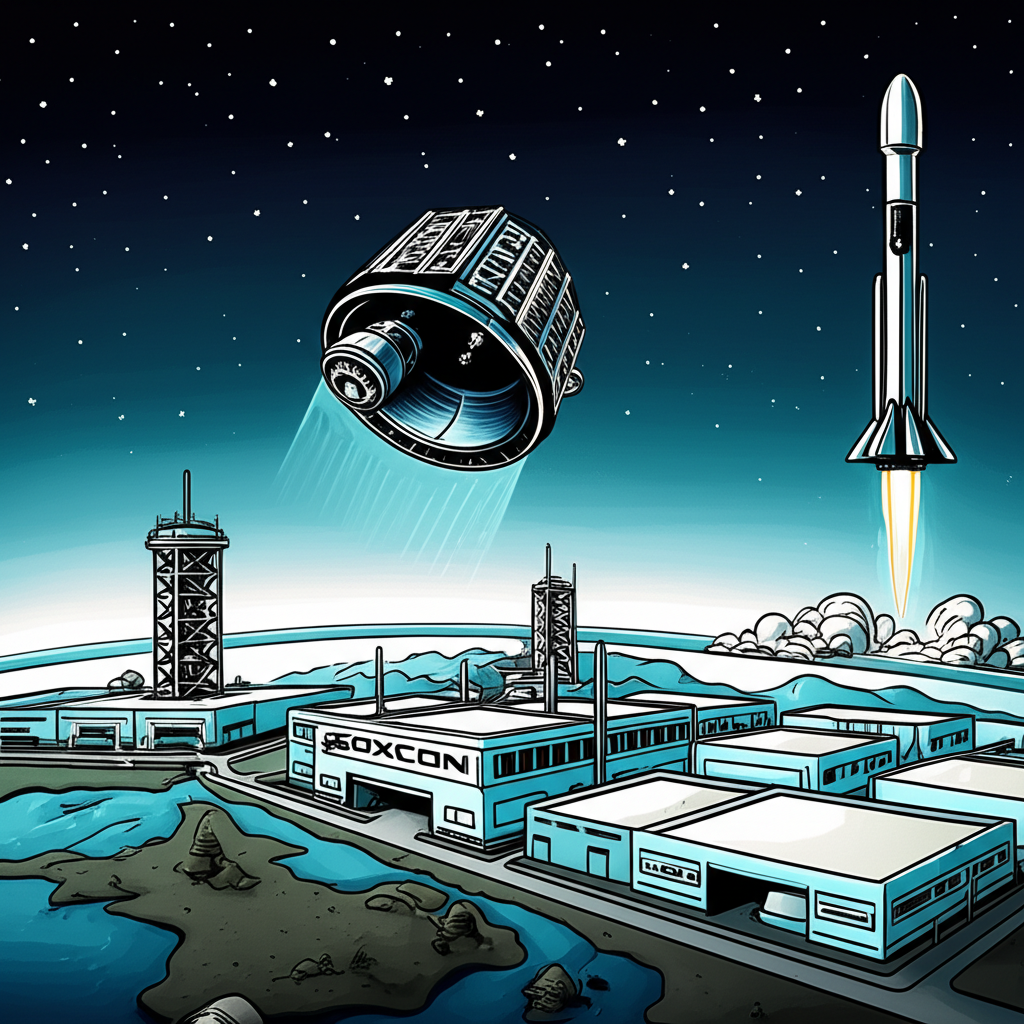Introduction: Foxconn’s Orbital Shift with SpaceX
For decades, Foxconn has stood as the backbone of global electronics manufacturing, best known for assembling the iconic iPhone at scale. But a new chapter is unfolding—one that propels the company far beyond factory floors and into the vastness of space. In a strategic move signaling long-term transformation, Foxconn has partnered with SpaceX to deploy satellites into Low Earth Orbit (LEO). This isn’t just about launching hardware into orbit; it’s about redefining how industrial systems connect, communicate, and operate on a global scale. The collaboration marks a bold pivot from reliance on consumer electronics toward next-generation enterprise connectivity, powered by satellite technology. As we explore this shift, we’ll uncover the motivations behind Foxconn’s space ambitions, examine the details of its partnership with SpaceX, and assess how this initiative could reshape industrial IoT, supply chain logistics, and future wireless networks.

The Strategic Imperative: Why Foxconn is Rocketing into LEO
Beyond the iPhone: A Vision for Diversification and Resilience
Foxconn’s move into the satellite domain reflects more than curiosity—it’s a deliberate strategy to future-proof its business. For years, the company has been working to reduce its dependence on a narrow client base, most notably Apple, whose product cycles and market shifts can heavily influence Foxconn’s financial performance. To build resilience, the company has expanded into electric vehicles, semiconductors, and now aerospace. Entering the LEO satellite market allows Foxconn to leverage its unmatched strengths in mass production, supply chain orchestration, and complex electronics integration—skills honed over decades—but apply them to a rapidly growing sector with long-term scalability. By establishing a presence in space-based infrastructure, Foxconn isn’t just diversifying revenue; it’s positioning itself as an enabler of critical digital transformation across industries.

The LEO Advantage: Tapping into Next-Gen Connectivity Needs
The decision to focus on Low Earth Orbit is rooted in practical technological superiority. LEO satellites orbit between 160 and 2,000 kilometers above Earth, drastically reducing signal delay compared to traditional geostationary (GEO) satellites, which operate over 35,000 kilometers high. This lower latency makes LEO ideal for time-sensitive applications like real-time monitoring, autonomous systems, and industrial automation. With higher bandwidth potential and improved data throughput, these satellites are uniquely suited to support the Industrial Internet of Things (IIoT), where thousands of sensors and machines need constant, reliable communication. For Foxconn, whose global operations span remote production sites and complex logistics hubs, LEO connectivity offers a solution where terrestrial networks fall short—whether due to geography, cost, or infrastructure limitations. It’s not just about staying connected; it’s about ensuring operational continuity in every corner of its supply chain.
SpaceX and Foxconn: A Powerful Alliance for LEO Deployment
The Falcon 9 Launch: Detailing the Mission
To bring its satellites into orbit, Foxconn has turned to one of the most reliable and cost-efficient launch providers in the world: SpaceX. The Falcon 9 rocket, with its reusable first stage and high launch cadence, has revolutionized access to space. Foxconn’s satellites have been deployed through rideshare missions—opportunities where multiple payloads are launched together—allowing for faster, more economical entry into LEO without the need for a dedicated rocket. This approach underscores a broader trend in the space economy: the democratization of satellite deployment. By partnering with SpaceX, Foxconn gains access to proven launch infrastructure and operational expertise, accelerating its timeline from concept to in-orbit validation. These early missions serve as critical stepping stones toward a larger, more ambitious constellation.

Introducing PEARL and B5G: Foxconn’s Pioneer Satellites
At the forefront of Foxconn’s space initiative are two key demonstration satellites: PEARL (Prosperity, Empowerment, and Resilience of the Advanced Living) and the B5G (Beyond 5G) testbed. These aren’t full-scale commercial units but rather experimental platforms designed to validate communication protocols, test hardware performance in orbit, and assess data transmission capabilities under real-world conditions. The PEARL satellite focuses on proving the viability of Foxconn’s end-to-end satellite communication system, particularly for enterprise and industrial use cases. Meanwhile, the B5G satellite explores next-generation wireless standards that promise ultra-reliable, low-latency connections—essential for applications like remote equipment control, predictive maintenance, and synchronized manufacturing processes. These early missions provide invaluable data, helping Foxconn refine its technology before scaling up to a full constellation.
Foxconn’s LEO Vision: Industrial IoT and Enterprise Solutions
Connecting the Supply Chain: A New Frontier for Manufacturing
Foxconn’s ultimate vision extends far beyond launching satellites—it’s about creating an integrated network that transforms how manufacturing and logistics function. Imagine a world where every shipment, machine, and facility in Foxconn’s global operation is connected in real time, regardless of location. From raw material transport across oceans to final assembly in inland factories, LEO satellites could enable continuous tracking, condition monitoring, and instant alerts for anomalies. This level of visibility allows for dynamic adjustments, reduced downtime, and enhanced security against theft or disruption. In regions with poor internet access, satellite connectivity ensures that even the most remote facilities remain fully integrated into the digital workflow. By embedding satellite-powered IIoT into its operations, Foxconn aims to build a smarter, more resilient, and self-optimizing supply chain—one that responds proactively rather than reactively.

B5G and Beyond: Enabling Future Wireless Technologies
While 5G continues to roll out worldwide, Foxconn is already looking ahead to what comes next: Beyond 5G (B5G). This next phase of wireless communication promises to deliver not just faster speeds, but also ultra-reliable low-latency communication (URLLC), massive machine-type communication (mMTC), and enhanced mobile broadband (eMBB)—all crucial for industrial automation. Foxconn’s B5G satellites are designed to explore how these capabilities can be delivered via space-based networks. Potential applications include coordinating fleets of autonomous vehicles in mining operations, enabling real-time control of robotic arms in smart factories, or supporting high-definition video analytics for quality assurance. Unlike consumer-focused broadband services, Foxconn’s approach prioritizes mission-critical enterprise needs, offering tailored solutions for industries where failure is not an option. This positions the company not as a telecom provider, but as a strategic technology partner for the industrial digital age.
Navigating the LEO Landscape: Competition and Collaboration
The Crowded Orbit: Players in the LEO Satellite Market
Foxconn is entering a satellite landscape that’s rapidly filling up. Companies like SpaceX with its Starlink network, Amazon’s Project Kuiper, and OneWeb—a joint venture between Eutelsat and the UK government—are already deploying thousands of satellites to deliver global broadband. Other players, including Telesat with its Lightspeed constellation and various national space agencies, are also investing heavily in LEO infrastructure. This surge in activity reflects the immense potential of satellite-based connectivity, but it also means the market is becoming fiercely competitive. Foxconn’s challenge lies in differentiation. Rather than compete directly in the consumer internet space, the company is carving out a niche in industrial and enterprise solutions. By focusing on verticals like manufacturing, logistics, and critical infrastructure, Foxconn leverages its deep industry knowledge and existing client relationships to offer targeted, high-value services that general-purpose networks may overlook. As a recent report by McKinsey & Company highlights, private investment in the space sector is accelerating, turning LEO into one of the most dynamic frontiers for technological and financial growth. McKinsey & Company: Space—The next growth frontier for private equity and investors.
SpaceX’s Dual Role: Partner and Competitor
The relationship between Foxconn and SpaceX is both synergistic and complex. On one hand, SpaceX provides the launch services that make Foxconn’s satellite ambitions possible. Without Falcon 9’s reliable and frequent access to orbit, Foxconn’s timeline would be significantly delayed. On the other hand, SpaceX’s Starlink constellation is itself a major player in the enterprise connectivity market, offering high-speed, low-latency internet to businesses, maritime operators, and remote facilities. This creates a nuanced dynamic: Foxconn relies on its partner for access to space, while simultaneously competing with it in the service layer. To succeed, Foxconn must clearly define its value proposition—emphasizing integration with industrial systems, specialized hardware, and tailored data solutions rather than generic broadband. The ability to coexist as both customer and competitor underscores the evolving nature of the space economy, where collaboration and competition often go hand in hand.
Challenges and the Path Forward for Foxconn’s Space Ambitions
Technical Hurdles and Regulatory Landscape
Building and operating a satellite constellation is no small feat. From the moment a satellite is designed to its eventual decommissioning, numerous technical challenges must be overcome. Satellites must withstand extreme temperatures, radiation, and vacuum conditions in orbit, all while maintaining precise communication and power management. Data processing, encryption, and ground station coordination add further layers of complexity. Beyond engineering, the regulatory environment presents its own set of obstacles. Securing spectrum rights, complying with international space treaties, and meeting national regulations for data privacy and transmission require extensive legal and diplomatic engagement. Additionally, the growing issue of space debris threatens the long-term sustainability of LEO operations. With thousands of satellites already in orbit, responsible design—including end-of-life deorbiting mechanisms—is essential. The European Space Agency has been at the forefront of monitoring and addressing this challenge, offering vital research and policy guidance for all satellite operators. European Space Agency: Space Debris.
Long-Term Outlook: Building a Sustainable Space Business
For Foxconn, the journey into space is just beginning. The success of its LEO initiative will depend on more than just launching satellites—it will require building a sustainable, scalable business model. Future steps may include expanding the constellation, developing proprietary ground terminals, and forming strategic alliances with industrial partners in energy, transportation, and agriculture. Revenue will likely come from subscription-based services, data analytics platforms, and integrated hardware solutions tailored to specific enterprise needs. The ultimate goal is not merely to operate a satellite network, but to become a core infrastructure provider for the next generation of connected industry. If executed well, this venture could transform Foxconn from a contract manufacturer into a technology innovator—one that shapes how global enterprises communicate, automate, and evolve in an increasingly interconnected world.
Conclusion: Foxconn’s Ambitious Trajectory
Foxconn’s foray into Low Earth Orbit with SpaceX represents a defining evolution in its corporate identity. Once defined by its role in assembling smartphones, the company is now charting a course into space to power the future of industrial connectivity. This shift is more than a diversification play—it’s a strategic repositioning that leverages decades of manufacturing expertise to enter a high-growth, technology-driven frontier. By focusing on industrial IoT, supply chain visibility, and Beyond 5G enterprise applications, Foxconn is targeting a specialized but vital segment of the satellite market. Despite the challenges posed by competition, regulation, and technical complexity, its partnership with SpaceX provides a strong foundation. As the line between terrestrial and space-based infrastructure blurs, Foxconn is positioning itself not just as a participant, but as a leader in the emerging era of global, real-time industrial connectivity—launching not just satellites, but a new chapter in its legacy.
What is Foxconn’s primary goal for launching satellites into Low Earth Orbit (LEO)?
Foxconn’s primary goal is to diversify its business beyond traditional electronics manufacturing, focusing on providing specialized connectivity solutions for industrial IoT, supply chain optimization, and Beyond 5G (B5G) enterprise applications. This aims to create new revenue streams and enhance its global operational efficiency.
Which specific satellites has Foxconn launched with SpaceX, and what are their functions?
Foxconn has launched demonstration satellites, including the PEARL (Prosperity, Empowerment, and Resilience of the Advanced Living) and B5G demonstration satellites. Their functions are primarily for communications testing, experimental payloads, and laying the groundwork for future LEO constellation services, particularly for industrial and enterprise use cases.
How does Foxconn’s LEO satellite venture relate to its core business of iPhone manufacturing?
While seemingly distinct, the LEO venture relates by offering Foxconn a path to diversification and resilience against market dependencies. It leverages Foxconn’s expertise in complex hardware and global operations, potentially providing enhanced connectivity for its manufacturing and supply chain processes, indirectly supporting its core business while expanding into new high-tech areas.
Are SpaceX satellites used for Foxconn’s LEO constellation different from Starlink satellites?
Yes, Foxconn’s satellites (like PEARL and B5G) are distinct from SpaceX’s Starlink satellites. While both operate in LEO and may be launched by SpaceX’s Falcon 9 rockets, Foxconn’s satellites are designed for its specific industrial IoT and enterprise communication objectives, whereas Starlink focuses on global consumer and broad enterprise internet broadband.
Who makes low Earth orbit satellites for commercial or industrial applications?
A growing number of companies make LEO satellites. These include established aerospace manufacturers, specialized satellite developers, and even companies like Foxconn that are diversifying into the space sector to build their own constellations. Examples include manufacturers for Starlink, OneWeb, Project Kuiper, and various national space programs.
What are the long-term implications of Foxconn’s entry into the space industry for the tech sector?
Foxconn’s entry could signify a trend of major industrial players directly investing in space infrastructure for enterprise applications. It could drive innovation in satellite manufacturing, accelerate the integration of space-based connectivity with terrestrial networks, and reshape how global supply chains and industrial operations are managed through ubiquitous, low-latency data.
How does Foxconn’s LEO strategy compare to other major players in the satellite internet market?
Unlike major players like Starlink, OneWeb, or Project Kuiper, which primarily target consumer or broad enterprise broadband internet, Foxconn’s strategy appears more specialized. It focuses on niche industrial IoT, smart manufacturing, and B5G enterprise solutions, leveraging its existing client base and expertise in complex industrial ecosystems.
What kind of data or services will Foxconn’s satellites provide once fully operational?
Once fully operational, Foxconn’s satellites are expected to provide services such as:
- Real-time tracking and monitoring for global supply chains.
- High-bandwidth data transmission for industrial IoT devices.
- Low-latency communication for remote manufacturing facilities.
- Beyond 5G (B5G) connectivity for enterprise solutions.
- Enhanced connectivity for critical infrastructure in underserved areas.
Is SpaceX planning on landing on the moon, and how does this relate to LEO satellite launches?
Yes, SpaceX is actively developing its Starship rocket for deep space missions, including potential human landings on the Moon and Mars. While Moon landings are a separate long-term goal for SpaceX, the technological advancements and operational expertise gained from its Falcon 9 launches and LEO satellite deployments (like for Foxconn) contribute to its overall capabilities and funding for these ambitious space exploration projects.
What are the main challenges Foxconn faces in building and operating its own LEO satellite network?
Key challenges include:
- Technical complexity: Designing and maintaining reliable satellites and ground infrastructure.
- Regulatory hurdles: Navigating international and national licensing for spectrum and operations.
- Financial investment: Significant capital expenditure for launches and satellite production.
- Market competition: Differentiating services in a crowded LEO market.
- Space debris management: Ensuring sustainable and safe orbital operations.

留言